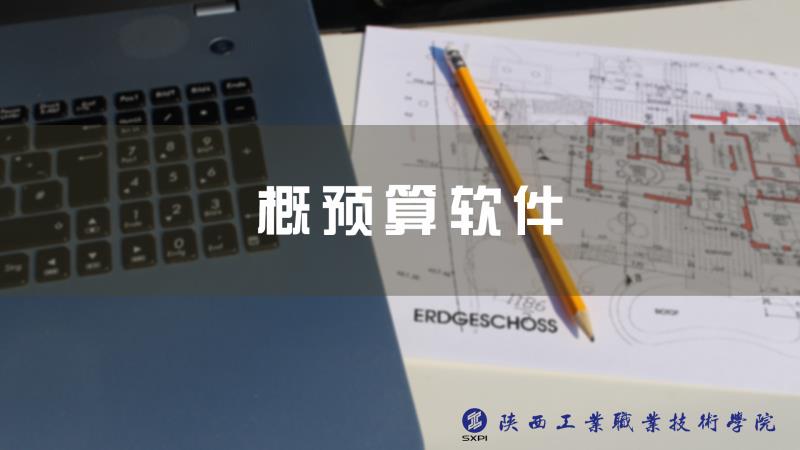
当前课程知识点:互联网企业估值 > 第三章 企业价值评估的基本方法 > 3.3.2公式的给出收益额与收益期限的求解 > Video
同学们大家好
Hello everyone
这一节我将带大家来了解
In this section I introduce the basic formula of
关于收益法的基本公式
the income method
及其一些比较特殊情况的推导
and some derivations of some special cases
以及在收益法这个公式之下
and the solution of some related parameters
我们的一些相关参数的求解
under the formula of income method
现在看到呢就是我们整个收益法折现
What you see now is a rough map
公式的一个大致的图谱
of the entire income method discounted formula
我们说既然这项资产我们愿意为它付出相应的成本
We are willing to pay the corresponding cost for
是因为这项资产
this asset because this asset will bring
能够在未来给我们带来收益
us benefits in the future
那未来的收益我们怎么能够折算成当前
How do we convert future earnings into
我愿意为他支付的成本呢
the current cost of paying for it
这里使用到的方法就被我们称之为收益的折现
The method used here is called discounted income
好 我们假设这项资产能够给我们带来N年的收益
We assume that this asset can bring N-year revenue
那么可想而知从当前开始到明年的这个时候
It can be imagined that from the current beginning
我们称之为一年吧
to the next year, we call it a year,
那么到明年这个时候呢
then by this time next year
我们假设所带来的收益为A1
we assume that the benefit brought by A1
到后年的这个时候为A2
to the next year is A2,
第三年为A3
the third year it’s A3,
一直到第n年结束为An的话
until the end of the nth year is An,
那么这是我们所看到的每年的收益
then this is the annual income we see
如果我们想把这个问题变得更加普遍化
If we want to make this problem more general
我们当然可以想得到 那就是在每年的进行过程中
of course, it has a corresponding discount rate
它会有一个相应的折现率
or a representation of risk
或者说一个风险的表示
in the course of each year
好,那我们需要的是将每一年的
Ok, then what we need is to fold the benefits of
收益都折到当前来
each year to the present
那这个时候我们就可以想
At this time we can think
第一年的收益它所对应的现值等于多少呢
what is the current value of the first year's income
我们需要做的是用A1除以1+r1
We need to divide A1 by 1+r1
这里的1+r1表示的就是
The 1+r1 indicates the increased benefit
在第一年这个时间推进过程中所带来的
or risk change, brought about during
一个收益的增加或者说是一个风险的变动
the first year of advancement
那么第二年结束的时候
What kind of present value does A2
所带来的收益A2又对应我们什么样的一个现值呢
bring to us at the end of the second year
我们转回来
Let's come back
首先是A2,这个收益对应到
First what is the equivalent of A2
第一年结束的时候,等于多少
to the end of the first year
我们按照刚才用A1/(1+r1)的思想
We follow the idea of A1/(1+r1) just now
我们就可以得出它是A2/(1+r2)
we can conclude that it is A2/(1+r2)
可这个时候
But at this time,
我们只是把它折到了第一年的结束
we only folded it to the end of the first year
当前我们需要有A2除以1+r1 同时再除以1+r2
Currently we divide A2 by 1+r1 and divide by 1+r2
所以这个公式我们简单的一个归纳推理
So this formula is a simple inductive reasoning
你就会发现第n年它的收益的现值就应该是
You will find that the present value of its income
An除以1+r1
in the nth year is the division of An by 1+r1
除以1+r2 除以1+rn等等
divided by 1+r2, divided by 1+rn, etc
所以得出来的就是
So what we get is the formula of
我们现在所能看到的收益的公式
the income we can see now
P等于A1/(1+r1)加上A2/(1+r1)/(1+r2)等等它的一个求和
P is equal to the sum of A1/(1+r1) plus A2/(1+r1)/(1+r2)
那么这里当然我们要稍微解释一下了
We have to explain it a bit
A1 A2一直到An是我们每年的纯收益
A1, A2 until An is the annual net income
r1到rn是我们每年的一个折现率
r1 to rn is the annual discount rate
当然你也可以理解为对一些特殊的产品
Of course, you can also understand
或者说资产
the rate of return or principalization of
可以是收益率或者本金化率
some special products or assets
n在我们这里就作为年期出现了
n appears here as a year
这是我们在讲到收益法的时候
This is the most basic formula
一个最基本的公式
when it comes to the income method
那有时候我们在进行评估的时候
Sometimes we may not use such a complicated formula
我们可能不会用这么复杂的公式
when conducting an assessment
因为我们不会假设说每年的折现率都在变动
we don't assume the annual discount rate is changing
甚至有时候我们不会假设
and sometimes we don't assume that
每年的收益在变动
the annual return is changing
所以根据一些不同的情况
So according to some different situations
我们对这个公式会有一些特殊的演进
we will have some special evolution to this formula
好,现在我们就可以看到
Ok, now we can see
在假设所有的折现率
under the assumption that all discount rates
都保持不变的情况下
remain the same situation,
我们都可能会有以下四种情况
we may have the following four situations
第一种,收益保持不变
The first type of income remains unchanged
年期固定
and the term is fixed
那么它就是一个简单的等比数列的求和
Then it is a simple summation of the series
这一块我们由于时间问题
This piece of us does not make a specific expansion
不做具体的展开
due to time issues
我们怎么来理解这个公式?
How do we understand this formula?
我们可以将收益年期推到无限远的时候
When we push the income period to infinity,
就会发现资产的价值其实等于什么呢
we will find out what the value of the asset is equal to
等于收益A除以r
equal to the income A divided by r,
那你会发现它其实就是
then you will find that it is actually
一个收益的本金化
a principal of income
这是我们的一个比较简单的推理
This is a relatively simple reasoning
第二个情况
In the second case,
那就是我们有时候在给出收益的时候
we sometimes don’t ask for it to remain
并不是要求它一直保持不变
the same when giving the return
因为我们可能说靠近我们这个时间点这一段
Because we may close to this point in time
比如说未来的五年
for example, in the next five years ,
我们可能有把握的给出每一年的收益
we may be confident to give the benefits of each year
这个时候它的收益可能不一样
At this time, its income may be different
而再远了之后
And after a long time,
我们会想那么远的事情,谁都不好说
things will not be predicted
那这个时候我可能会稍微的粗略估计一下
At this time, it may be slightly estimated
给出一个恒定不变的值
to give a constant value
比如说A
For example, A,
那这个时候你会发现
you will find that
在我对未来进行折现的时候
when you discount the future,
其实将未来的时间段划分成了两段内容
you will divide the future time period into two paragraphs
第一段我们可以称之为叫做前小n点
The first paragraph we can call it the front small n point
后面我们称为叫做大N减小n
which we call the big N reduction n
这两段内容当中前一段
In the previous paragraph of the two paragraphs,
我们可能每一年给出不同的收益额进行折现
we may discount the amount of income given each year
后面给出一个固定值进行一个折现
followed by a fixed value for a discount
那么这块就会将公式劈成两半来看
Then this will divide the formula into two parts
当然如果说你假设收益是无限远的话
Of course, if you assume that the income is infinite
我们也会将这个公式推成无限年期的形式
we will also push this formula into an indefinite form
这是我们看到的第二类情况
This is the second type of situation we have seen
可有时候我们会想
Sometimes we will think that
我们在对收益额进行估计的时候
when we estimate the amount of income,
可能既不是定值
we may not be a fixed value
也不是一个任意变动值
or an arbitrary change value
而是我们发现了它的收益额
but we may find that
可能存在某种规律
there may be some law in its income
比如说我们常见的等差数列
For example, if we have a common arithmetic progression
或者等比数列
or a series of equal ratios
那么当出现是等差数列的收益额
then when the amount of income that appears
递次增加的时候
to be an arithmetic progression increases in turn,
我们又会发现我们的公式会发生变化
we will find that our formula will change
当然我们在这里同样不会讲
Of course, we will not talk about
这个公式是怎么推导出来的
how this formula is derived here
我们来讲这个公式的理解
When we talk about this formula,
再将这个收益公式
and then turn this income formula
变成无限年期的时候
into an indefinite period
我们会发现它与基本公式之间的
we will find that the difference between it
差别在于哪呢
and the basic formula
基本公式我们说是
The basic formula is that A is divided by r to be
A除以r是对收益的本金化
the principalization of the proceeds
那么有了一个等差数列之后
With an arithmetic progression,
你会发现我们的资产的价值
you will find that the value of
确实有了增加
our assets has indeed increased
它增加了一个B除以r的平方
It adds a B divided by the square of r
相当于在我们的当前资产之上
which is equivalent to a discount on our current assets
又加了一点收益的折现
plus a little gain
我们说可以称之为叫加了个尾项,增加的更多了
we can call it a tail item and add more
这是我们看到的收益
This is the case where we see the increase
以等差数列递增的情况
in earnings in the arithmetic progression
那如果递减呢?
If it is decrementing,
递减我们就将A除以R
we will transform the plus sign between
加上B除以r平方之间这个加号
the A devided by R and B devided by the square of r
变成减号
to become a minus sign,
就相当于我们将收益减少了
which is equivalent to reducing our income
你会发现我们这里其实还是要对A和B做定义了
You will find that we have to define A and B
A是我们的收益,B我们认为是收益的递增
A is our income, B we think is the increase of income
每年递增
increasing every year
这里我们当然要求A是要大于B的
Here requires A to be bigger than B
不然的话我们算出来的就是个笑话
Otherwise, we figured out a joke
第四种情况
In the fourth case,
当我们的收益变成等比数列递增的时候
when our income becomes equal to the number of series
这里当然我们就给出
here we will give the ratio of the
这个等比数列递增的比率
increment of the ratio
我们说比如是S吧
For example, S
那这个时候你会发现我们的折现率
you will find that our discount rate has changed
其实有了变化,反映在我们的折现公式上
reflected in our discount formula
尤其是在年期无限的时候
Especially when the period is infinite,
你会发现所谓的等比数列式的增加
the increase of the so-called proportional ratio
其实是对我们收益所对应的
is actually the reduction of
风险的一个减少
the risk corresponding to the income
所以就变成了P
So it becomes P
我们的价值等于A除以r减s
our value is equal to A divided by r minus s
对风险的减少是个减号
the reduction of risk is a minus sign
那如果说我们的收益是成等比数列的减少
If the income is reduced by a series of equals
那这个时候你会发现我们的分母应该是r加上s
the denominator should be r plus s
仅仅是一个符号的变化
just a change in sign
由此我们就可以发现
From this we can find that
等差数列是
the arithmetic progression is the increase of
收益的尾项增加
the tail term of the income
等比数列相当于
and the equivalence series is equivalent to
是我们对风险的一个调整
our adjustment of the risk
所以这是我们现在看到的
So this is the corresponding meaning of
四种情况下对应的八个公式
the eight formulas corresponding to
它们相应的一个含义
the four cases we are seeing now
这是我们在讲到收益法的时候
This is a series of formulas that
常见的一系列公式
we often talk about when it comes to income law
当然根据不同的情况
Of course, depending on the situation,
我们可能还会有一些其他的变化
we may have some other changes
在这里呢我们也不再做相应的展开
Here, we will not expand accordingly
好,那在了解到这样一些
Well, after learning about the changes
收益法公式的变化之后
in some income method formulas
我们就要想这样一个问题了
we have to think about such a problem,
那就是我们在讲到企业价值的时候
that is, when we talk about corporate value
这里的收益是指什么呢?
what is the income here?
折现率又是指什么呢
What does the discount rate mean
那我们说企业的价值
Then we say that the value of the enterprise
确实会套用收益法的公式
does apply the formula of the income method
那么所谓的收益
So the so-called income,
我们就选择了现金流
we choose the cash flow
企业资本现金流
corporate capital cash flow
所谓的折现率
The so-called discount rate,
我们在这里会做一个相应的处理
we will do a corresponding treatment here
我们在这里看到公司下面呢,它叫做WACC
Here we see the company called WACC,
它所对应的是叫做Weighted Average Cost of Capital
which corresponds to the Weighted Average Cost of Capital,
就是加权平均资本成本
which is the weighted average cost of capital
它所对应的当然是包含着企业所有者权益
It corresponds to the embodiment of
当中所有的一个风险的体现
all the risks involved in the owner’s equity
好,那我们现在就来了解一下这样一些参数
Ok, let's take a look at some of these parameters
它们一个具体的过程是什么
What is their specific process
第一部分
In the first part,
我们说企业的收益到底是用什么来表示
we say what is the company's revenue
我们讲到资产的时候
When we talk about assets,
说他能给我们带来利润是多少
we say that he can bring us profits,
我们直接拿过来
we take them directly
当你讲到企业的时候
When you talk about business,
你会想所谓的收益
you will think about the so-called benefits
其实它有两种表达类型
In fact, it has two types of expression
比如说利润,比如说现金流
such as profit, cash flow,
那么选哪个呢
then which one to choose
我们选现金流
We choose cash flow,
因为现金流真实地反映了
because the cash flow truly reflects
这家企业他的所有的资金往来
all the capital transactions of this company
我们说这是一个不太容易更改的情况
We say this is a situation that is not easy to change
而利润其实是可以通过会计的方法
And the profit can actually be adjusted
来进行一定的调整的
by accounting methods
比如说我们在应收账款的
For example, when we deal with bad debts of
坏账处理的时候
accounts receivable
我们不同的统计口径可能就会对我们的利润带来影响
our different statistical calibers may affect our profits
所以我们为了真实地反映这家企业的价值
So in order to truly reflect the value of this company
我们选用现金流
we choose cash flow
那我们在讲到收益期限的时候
Then, when we talk about the term of income,
也要考虑到
we must also take into account
这家企业的发展特点
the development characteristics of this company
我们将未来的时间段划分成两部分
We divide the future time period into two parts
第一部分我们可以称之为叫做非常增长阶段
The first part, we can call it the very growth stage
第二部分我们可以称之为叫做稳定发展阶段
The second part, we can call a stable development stage
第一部分我们说这家企业
In the first part, we said that this company
可能刚刚开始运营
may just start operating
它的市场占有率在一个我们说
Its market share may increase continuously within
合理经营范围内可能会不断增加
a reasonable business scope and the revenue may increase
收益可能也会增加
So at this time the income is in a changing growth phase
所以这个时候收益处在一个变动的增长阶段
At this time we may need to carry out
那这个时候我们可能需要进行一个不同收益的叠加
a superposition of different benefits
而当这家企业发展稳定之后
When the company develops stably,
它的收益期 我们说假设给一个美好的愿望
we assume a good wish for its income period
到无限远
and the income period is infinite
那这个时候我们在这一段时间内
At this time, we will make a profitable discount
做一个收益不变的折现
in this period of time
这两点我们说
These two points we say that
它都有一个很重要的假设
it has a very important assumption
那就是我们确实是认为
That is, we really think that
这家企业能够持续经营下去
this company can continue to operate
那这个时候你会想了
Then you will think about it at this time,
有什么问题啊?
what is the problem?
我们在使用这个假设的时候
When we use this hypothesis,
第一我们确实没有考虑到
the first we did not consider that
这家企业未来可能会破产
this company may go bankrupt in the future
给他的这个愿望太美好了
This wish is so beautiful
第二点我们对这个收益的预测
Second, our prediction of earnings is
全部是基于过去
based on a basic judgment of the past
乃至当前这家企业的主营业务范围
and even the current business scope of the company
它的发展的策略等等的一个基本判断
and its development strategy
没有考虑到
did not take into account the assumption that
这家企业在未来可能会采取多种经营
the company may adopt diversified operations in the future
乃至改变主营业务的这样一些假设
or even change its main business
我们说已经把这家企业的运营方式限定死了
We said that the company’s operations have been limited
缺少了一定的灵活性
and there is a lack of flexibility
当然这不影响我们使用预期现金流折现的
Of course this does not affect our large premise
这样一个大的前提
of discounting the expected cash flow
所以根据一定的原理和方法
Therefore, according to certain principles and methods
我们对现金流折现法当中的
we can obtain a corresponding reasonable range
第二个参数获利年限
for the profitability of the second parameter
可以给出一个相应的合理范围
in the discounted cash flow method
最后我们还剩一样 那就是折现率
Finally we have a discount rate
因为折现率相对的来说复杂一些
Because the discount rate is relatively more complicated,
我们放在下一节内容来介绍
we put it in the next section to introduce
-开篇:课程团队介绍
--Video
-1.1理解互联网时代
--Video
--Video
-1.2识别互联网企业
--Video
-1.3中外互联网企业估值的比较
--Video
-1.4阿里巴巴IPO估值
--Video
-1.5谷歌公司IPO估值
--Video
-1.6互联网企业估值的新问题
--Video
-习题--作业
-2.1互联网企业的本质特征
--Video
-2.2互联网企业的估值原理
--Video
-2.3互联网企业的生命周期
--Video
-2.4互联网企业的价值源泉
--Video
-习题--作业
-3.1企业价值评估的一般方法
--Video
-3.2相对估值法:市场比较法
--Video
-3.3.1绝对估值法:预期现金流折现法
--Video
-3.3.2公式的给出收益额与收益期限的求解
--Video
-3.3.3折现率的选取
--Video
-3.4蒙特卡洛仿真模拟
--Video
-3.5 B-S期权定价法
--Video
-3.6 Fama-French三因子模型
--Video
-3.7 企业价值评估方法的注意事项
--Video
-习题--作业
-4.1互联网企业的分类
--Video
--Video
-4.2互联网企业估值典型案例一
--Video
-4.3互联网企业估值典型案例二
--Video
-4.4互联网企业估值典型案例三
--Video
-4.5互联网企业估值的方法选择
--Video
-习题--作业
-5.1独角兽企业的分类和分布
--Video
-5.2独角兽企业估值的难点一
--Video
-5.3独角兽企业估值的难点二
--Video
-5.4独角兽企业估值方法
--Video
-5.5.1成长期估值
--Video
-5.5.2成熟期估值
--Video
-5.6中国独角兽企业回归及估值问题
--Video
-习题--作业
-6.1.1创业股东价值演变与评估(一)
--Video
-6.1.2创业股东价值演变与评估(二)
--Video
-6.2.1企业内在价值与定期重估(一)
--Video
-6.2.2企业内在价值与定期重估(二)
--Video
-6.3创业板无形资产评价指数
--Video
-6.4创业板互联网板块的简评
--Video
-习题--作业
-习题--作业





